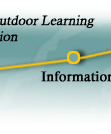|
Partnerships for Conservation: Snow Leopards in Ladakh
KarmaQuestpartners with non-governmental organizations (NGOs) and community-based non-profits around the world that are working to conserve the natural environment and cultures in places we visit. We invest financially and in other ways (e.g., donations of equipment, assisting in networking contacts, leadership, capacity building, etc.) in these partners, helping them manage the impacts of tourism on the destinations and enable local communities to benefit from tourism. Many of our trips visit partner NGO project sites to learn more about their work, and so that our guests can contribute through purchases, memberships and/or donations.
For the past decade or more, KarmaQuest has worked closely with the
Snow Leopard Conservancy (SLC) in Ladakh, India to
promote sustainable wildlife and homestay ecotourism. Our
Wintertime and
Summertime Quest for
the Snow Leopard are made possible only through SLCs many years
of research and collaboration with local communities to help make the snow
leopard a treasured asset rather than a hated pest.
The endangered snow leopard Panthera uncia is perhaps the worlds most elusive and charismatic large felid, serving as a flagship for mountain biodiversity. It persists in naturally low numbers, totaling 4500 to 7500. Inhabiting mountainous regions at elevations of 3000 to over 5000m in the Himalaya and Tibetan Plateau (and as low as 600m in Russia and Mongolia), its habitat is among the least productive of the worlds rangelands due to low temperatures, high aridity and harsh climatic conditions. With naturally low numbers of wildlife as prey, snow leopards often kill livestock, thus engendering animosity from herders. (Jackson, Dr. Rodney, Snow Leopard Conservancy)
The Snow Leopard Conservancy (SLC) uses a strategic two-pronged approach to resolve human-wildlife conflicts and encourage protection of wildlife. Both approaches are hinged on a participatory process that builds local stewardship of the snow leopard.
In Ladakh, India, SLC conducted village meetings with communities of Hemis National Park, which provides valuable habitat for at least 20-30 of these endangered cats. The villagers identified improved livestock management including predator-proofing night-time corrals as the way to reduce snow leopard depredation. They contributed materials and labor while SLC provided technical support and funds for materials. All livestock owners signed an agreement to protect snow leopards and other wildlife, and to keep their livestock numbers within reasonable limits. They were also encouraged to improve daytime guarding practices, and, where possible, to set aside areas where wild ungulates would benefit through better access to forage. However, depredation losses to predators cannot be completely eliminated on the open range. (ibid)
The second step sought to reduce or offset adverse economic impacts by enhancing income-generating capacities of households living in prime snow leopard habitat in Hemis National Park, Sham Valley and Zanskar Valley (Ladakh). Villagers chose homestays and wildlife tourism as the incentives that would give value to conservation of the snow leopard and generate supplementary household income. Along with it micro-enterprises like eco-cafs managed by local womens groups, solar showers and nature guides training programs were initiated to complement the homestay program.(ibid)
Under a UNESCO program on cultural and ecotourism, KarmaQuests Wendy Lama (Ecotourism Specialist)worked with the Snow Leopard Conservancy and Ladakhi communities to develop ecotourism that supports snow leopard conservation and brings livelihood benefits to the Ladakhi people who protect this endangered cat. The program helped nurture the village homestay development, called Himalayan Homestays, in Hemis National Park. This homestay program remains a vital component of the snow leopard conservation strategy there, giving economic value to the cats that draw visitors to the region. Tourists overnight in homestays where they experience Ladakhi culture. Families have now stopped harming the snow leopards that once killed their livestock, seeing them as attractions that bring in visitors and supplemental income instead of predators oftheir valuable livestock.
KarmaQuests snow leopard trips to Ladakh feed this win-win scenario. Trip members contribute $500 or more to the Snow Leopard Conservancys conservation and research programs in Ladakh;their visits generate financial incentives to village homestay operators to continue protecting the cats as the source of visitors interest.
Snow leopards have been seen by KarmaQuest Wintertime Quest trip participants on every one of its four winter trips!As of 2012, KarmaQuest trips have contributed over $16,000 to SLCs work in Ladakh. These trips have received the Trip of the Year award from Outside Magazine, and have been recognized in numerous international media as exemplary of environmentally responsible travel that contributes to conservation and social benefits.
We thank the Snow Leopard Conservancy and our other
partners in conservation for their committment to achieving long lasting results.
|











